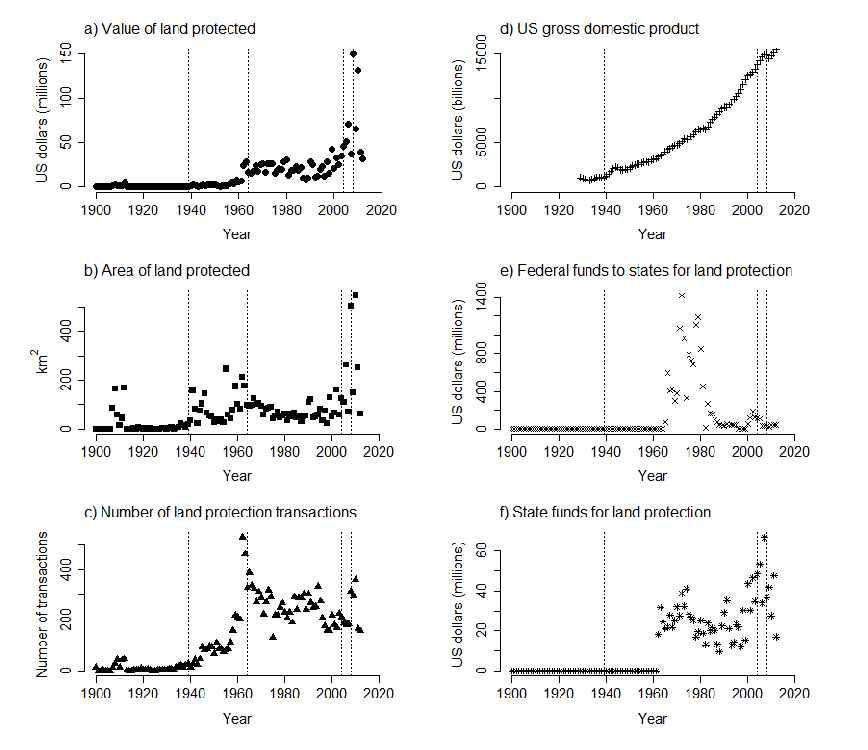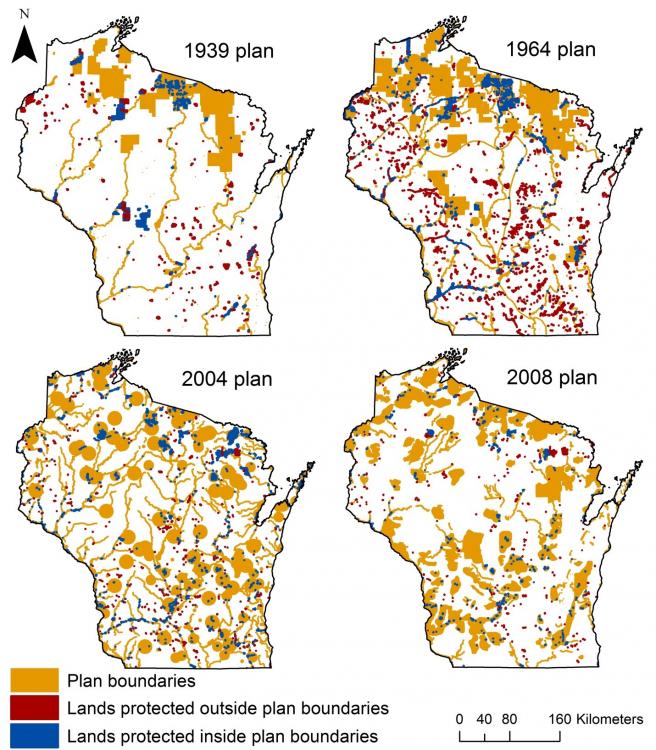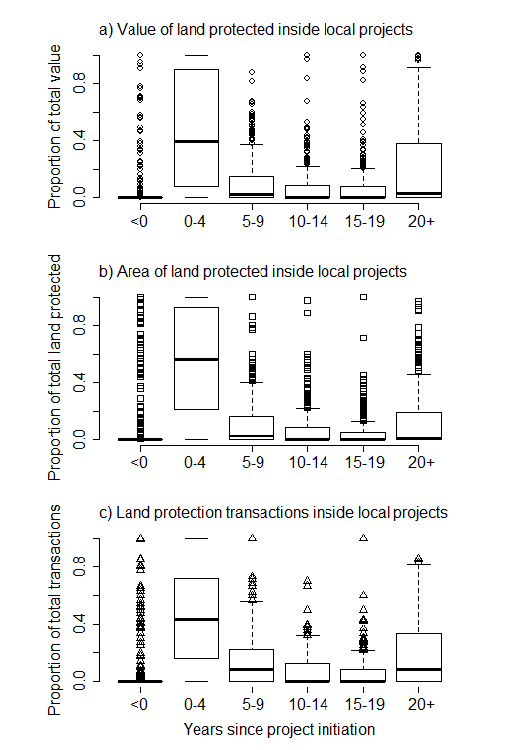Posted 01/14/15
Sarah Carter studies how plans can help us to more strategically protect lands for conservation. We can't afford to preserve all of the lands that we might like to, so we need to set priorities. Plans formalize these priorities. However, Sarah found that formal plans, for a number of good reasons, do not always correspond with big changes in how much, where, and what kind of land we protect.
Conservation plans identify where we can most efficiently protect parcels across the landscape to help conserve biodiversity into the future. Plans are comprehensive, involving the efforts of many people, including the public, often over multiple years. As a result, plans can be costly to develop. Thus it’s important to understand whether plans are making a difference. That is, are conservation plans actually influencing how and where we protect lands.

Sarah looked at two different kinds of plans – broad-scale plans that set priorities for land protection across an entire state, and local-scale plans that help define exactly which parcels within a given priority area we seeking to protect. She asked whether each type of plan influenced 1) how much land was protected, 2) where land was protected, and 3) what type of land was protected (e.g., forests for grasslands). Sarah asked these questions in the state of Wisconsin, in part because the Wisconsin Department of Natural Resources has been actively planning for and conserving land in Wisconsin for more than a century. The actual impact of conservation plans is difficult to detect, because we don’t know what would have happened in the absence of a plan. History is tricky like that. So Sarah took a different approach. She looked at land protection actions before and after each plan was developed. In essence, she asked whether we could see a difference in how much, where, or what kinds of lands were protected before versus after each plan was completed. Sarah’s study focused on four statewide plans led or developed in close collaboration with the Wisconsin DNR. The plans were completed in 1939, 1964, 2004, and 2008. She also looked at hundreds of local Wisconsin DNR plans completed between 1938 and 2011. Including historical plans (and land protection records) in the study provided an uncommon opportunity to look at the potential influence of plans over long time periods.

What Sarah found was in some ways surprising, and in other ways not. At a broad-scale, statewide plans did not have a clear influence on how much, where, or what type of lands are protected. Some changes in behavior that one might expect were detected. For example, the value and area of land protected in Wisconsin was greater after than before the 1939 plan. Similarly, more land was protected (via more individual transactions) after versus before the 2008 plan (Figure 2).However, overall 58% of lands protected within 20 years of plan completion were outside of plan boundaries (Figure 3).

.There are a number of likely reasons for this. First, money matters. Often changes in land protection were associated with changes in funding for conservation, or in the economy in general. It’s not surprising that plans are more likely to have an influence on land protection when there is more funding available to protect land. Second, it’s clear that plans build on each other, making it difficult to separate out the influence of any individual plan. Thus priority areas in recent plans are often the same general areas that were identified in earlier plans. Conservation actions build on each other – areas that we protect improve in quality over time through management and restoration actions, and become even more valuable as core areas around which we can center future protection activities. Thus our recent actions are often a continuation of actions that began many years ago, decades before the most recent plan was written!…..The story was quite different when Sarah and her colleagues looked at local-scale plans (what the Wisconsin DNR calls local projects, or plans that cover individual parks or wildlife areas). More than 91% of the time, more activity occurred in a local area after a local plan was approved. Further, most of this activity happened within the first five years (Figure 4). Clearly local plans make a difference, and they do so in a hurry.

The take home message: plans do matter. Broad-scale plans set the stage for local plans, and local plans correspond with big changes in local land protection. But clearly plans can be most influential when you have a perfect storm of influences coming together – when the economy is strong, when there is public and political support for conservation, and when there is funding available specifically for land protection for conservation purposes. While this conclusion will come as no surprise to many, it’s not something that had been documented previously in the scientific literature. The century-long, carefully-documented history of conservation planning and land protection by the Wisconsin DNR is not common worldwide, and allowed us to quantify and better understand this important interplay between plans, actions, and money in a way that hadn’t been possible before.”
Story by Bragina, Eugenia
